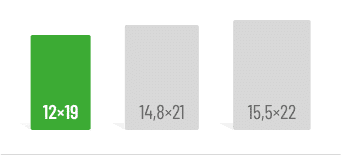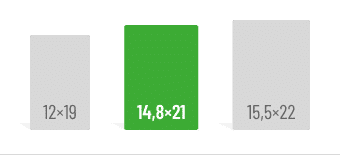First things first:
- A good plot needs inner logic, clear structure and emotional tension.
- Believable characters are created through individual motives, development and real decisions.
- Linguistic care – in spelling, style and structure – determines the first impression.
- Professional layout and formatting make your manuscript reader-friendly and marketable.
- Honest feedback and legal protection are essential before you publish.
Have you finished a manuscript and are considering self-publishing it? Congratulations – that’s a big step! But before you present your book to the public, make sure it’s really ready for the market . After all, a convincing cover or an exciting blurb is not enough if the content is not yet mature.
Today, self-publishing means more than just “upload and hope”. Readers expect professional quality – both linguistically and creatively. That’s why it’s important to critically review your work before publication – and, if necessary, get an experienced partner like GRIN on your side to guide you from manuscript submission to publication. In this article, you’ll find a checklist with the five most important points you should tick off before self-publishing – so that your book can stand up to publishing house publications.
Plot check: Is your plot coherent and logical?
A good plot is the foundation of every successful story – whether novel, crime or fantasy. Readers don’t just jump into a story because of exciting characters or stylistic sophistication, but above all because they ask themselves: What happens next? That’s why you should give your manuscript a thorough plot check!
A convincing plot needs more than just a good idea: it must be logically structured, told in a structured way and emotionally captivating. A strong plot follows an inner logic in which every action is comprehensible. This is also about the development of your main character – with clear goals, inner conflicts and decisions.
Typically, a coherent plot follows a basic dramaturgical pattern:
- Initial situation: shows the balance of the character(s) – usually with conflict
- Turning points: change the direction of the plot
- Escalation and climax: Tension at its peak
- Resolution: meaningful ending, open or closed
It is important that tension is not only created by external circumstances, but also by emotional friction and development within the characters: unpredictable but plausible twists make the events seem authentic.
To check your plot , an overview or mind map with events, motivations and turning points helps. Question every scene:
- Why does this happen?
- What follows logically from this?
- What development does the main character go through?
A change of perspective – e.g. from the point of view of the opponents – can also reveal weaknesses.
Practical tip: A plot outline or chapter overview will help you get an overview. Feedback from test readers or writing groups is particularly valuable.
Characters with depth: Taking character development seriously
Strong stories thrive on believable, multi-layered characters. Even the most exciting plot loses its impact if readers do not identify with the protagonists or cannot understand their actions. The development of your characters is therefore just as important as the plot structure. A character gains depth when he is more than a function in the story. What makes it unique? And what imprints, conflicts and desires drive him? Characters with a real past and development seem alive.
Questions about character development:
- What does it want to achieve – and why?
- What is she afraid of?
- What values shape them?
- What would she never do?
A good character evolves over the course of the story. It grows, changes or fails. Secondary characters should also have their own goals and motives. Instead of just describing characters, she shows through plot, language and conflicts. Doubts, mistakes and decisions make them authentic.
Tip: Character sheets help to structure central characteristics and conflicts. The clearer you know your character, the more believable they will be on the page.
Linguistic fine-tuning: punctuation, grammar and spelling
The best story loses its impact if it is linguistically improper. Errors in spelling, grammar or punctuation distract from the content and appear unprofessional – a real problem in self-publishing. A common mistake: trying to correct one’s own manuscript “on the side”. Our brain easily overlooks familiar formulations. That’s why a professional exam is so important.
A distinction is made between:
- Proofreading: checks spelling, grammar, punctuation
- Editing: additionally checks style, comprehensibility and logic
Both can be done separately or combined. If you want to sell your book, you shouldn’t skimp here. It is helpful to first thoroughly revise the text yourself.
Common sources of error:
- Punctuation (e.g. commas, dashes)
- Grammar (e.g., tenses, congruence)
- Style (e.g., word repetitions, nested sentences)
Tip: Tools such as the Duden-Mentor or LanguageTool help with the initial correction, but do not replace editing. A cleanly worded text shows respect for readers – and is a basic prerequisite for success in self-publishing. If you are looking for professional support, GRIN offers optional proofreading and editing services.
Consistent layout: Formatting for a professional look
A carefully formatted text is a central quality feature in self-publishing. Readers also judge books by how professionally they are prepared. Crooked paragraphs or inconsistent indents disrupt the flow of reading – regardless of how well the story is written. The layout is also part of the author’s work – especially in the case of print books.
Uniformity is the be-all and end-all. Pay attention to:
- a consistent font and size
- Consistent paragraph formats (indents, spacing)
- Clean chapter headings and page breaks
- correctly positioned page numbers and marginalia
The formatting differs depending on the genre: novels usually require a different line spacing and font size than non-fiction books with tables or footnotes. Readers’ expectations also vary. With Word, books can be formatted well even without typesetting software – with styles, hyphenation, section changes and gutters for the spine. Alternatively, there are specialized programs for authors – or you can opt for a service like GRIN, which prepares your book ready for printing and publishes it as an e-book and print edition .
Tip: Save your manuscript as a print-optimized PDF with embedded fonts and correct bleed—especially for books with images.
Gather feedback: Use external perspectives
Before you publish your book, it’s crucial to get outside feedback. External perspectives help you identify blind spots and further improve your manuscript. As an author, you are deeply involved in your story. This can lead to ambiguities or logical errors that you don’t notice yourself. External readers, known as beta readers, can give you valuable feedback on plot, character development, and style. Beta readers provide feedback on the plot, characters, and style. It is important that they fit the target group and criticize openly.
Ask specific questions:
- Are the characters believable and do they develop comprehensibly?
- Are there places where the plot is unclear or long-winded?
- How does the writing style affect the readers?
Set realistic deadlines and be open to feedback. The goal is to improve your book. Editing after the beta feedback is also useful. In this way, you combine the perspective of readers with professional expertise.
Expansion: Further points of preparation
Your manuscript is revised, formatted and seems ready for publication? Before you take the final step, there are still some important aspects that you should consider in order to complete your book project successfully and professionally.
- Title protection: Is your title already taken? A title protection notice can be useful.
- Legal: No violations of personal rights, no copyright-problematic quotes or images.
- Price: Research genre prices, production costs and be realistic.
- Marketing: Social media, website, press relations – plan your visibility early on.
- ISBN: Necessary for visibility in the book trade. Many platforms offer this – with GRIN you automatically receive an ISBN and benefit from distribution via bookstores and all major online shops.
- Cover: First impressions count – consider hiring a professional design.
- Blurb: Short, concise, exciting – and formulated in a search engine-friendly way.
Conclusion: Well prepared is half published
Self-publishing offers you as an author the freedom to publish your book as you see fit – but this freedom comes with responsibility. If you take your readers seriously, you should not only write your own text, but also critically question, revise and professionally prepare it.
With the checklist from this article, you can keep an eye on the most important stages:
- a coherent, well-thought-out plot,
- lively, profound characters,
- a linguistically finely honed text,
- a clean, genre-typical layout,
- Well-founded feedback from outside
– and the necessary final steps such as ISBN, blurb and cover design.
Each of these points will help ensure that your book is not only worth reading, but also ready for publication . Because a good book is not created by inspiration alone – it is the result of careful planning, revision and the will to quality.
If you don’t want to go the way to self-publishing alone, you will find the right support at GRIN – cost-effective, uncomplicated and with over 25 years of experience in the academic and independent book market. Take a look: https://www.grin.com/en/selfpublishing/
Whether you’ve just finished your first manuscript or are already in the process of publishing, use this checklist as a guide – and as a reminder that self-publishing is more than “uploading something quickly”. It is your personal publishing project. So do it professionally!
- Book Miracle – Captivating Plots
- The Writing Trainer – Checklist for Good Plots
- Novel School – Create Characters
- Vickieunddaswort – Building Figures with Depth
- Self-Publishing – Proofreading and Editing
- For Authors – Spelling and Grammar
- Textorat – Word for Self-Publishers
- Bookmundo – Tips for book marketing
- Epubli – Networking for Authors
- Addressing Provider – Self-Publishing Legal Checklist
Do you like our magazine? Then sign up for our GRIN newsletter now!







